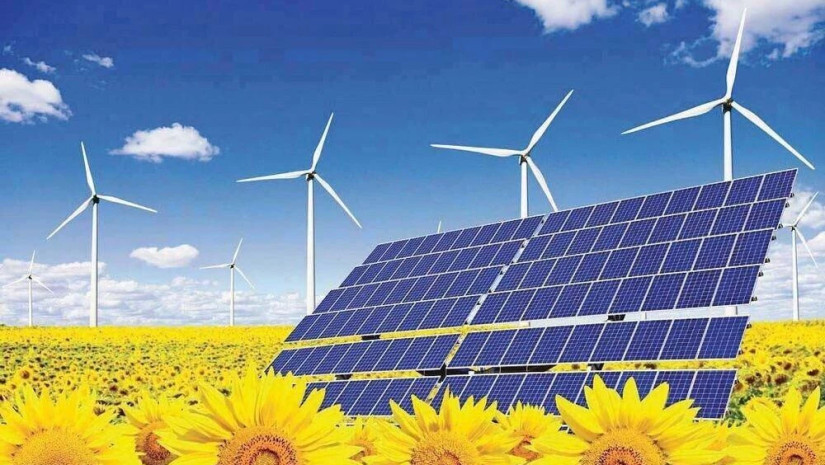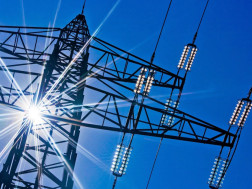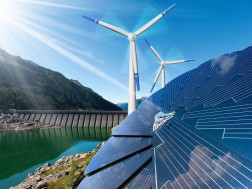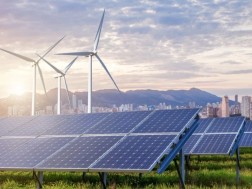Capacity additions in renewables electricity generation are expected to break another record this year, continuing last year's trend as governments increasingly seek to avail of renewables for energy security and climate benefits, according to a new report published Wednesday by the International Energy Agency (IEA).
Last year's record of renewable power capacity additions stood at 295 gigawatts in 2021, marking a 6% increase compared to the previous year, the IEA's latest Renewable Energy Market Update found.
Renewables proved resilient against supply chain challenges, construction delays and high raw material costs.
China accounted for 46% of worldwide renewable capacity additions although new Chinese capacity declined 2% year on year.
The European Union (EU) was the second-largest market in terms of increased capacity, with the region surpassing for the first time the historic high record in 2011 of 36 gigawatts.
"Energy market developments in recent months especially in Europe have proven once again the essential role of renewables in improving energy security, in addition to their well-established effectiveness at reducing emissions," said IEA Executive Director, Fatih Birol.
"Cutting red tape, accelerating permitting and providing the right incentives for faster deployment of renewables are some of the most important actions governments can take to address today’s energy security and market challenges, while keeping alive the possibility of reaching our international climate goals."
Continuing the trend of 2021, renewables’ growth so far this year is much faster than initially expected, driven by strong policy support in China, the EU and Latin America, which are more than compensating for slower than anticipated growth in the US, the IEA said.
The US outlook is clouded by uncertainty over new incentives for wind and solar and by trade actions against solar PV imports from China and Southeast Asia.
Global renewable power additions are expected to reach 320 gigawatts this year, breaking another record despite the continuing supply chain challenges, construction delays and high raw material prices.
The expected global capacity addition this year of 320 gigawatts is equivalent to an amount that would come close to meeting the entire electricity demand of Germany or matching the EU's total electricity generation from natural gas, according to IEA calculations.
Solar PV is on course to account for 60% of global renewable power growth in 2022, followed by wind and hydropower.
"The additional renewables capacity commissioned for 2022 and 2023 has the potential to significantly reduce the EU's dependence on Russian gas in the power sector. However, the actual contribution will depend on the success of parallel energy efficiency measures to keep the region’s energy demand in check," the IEA said in the report.
However, the current policy settings signal a loss of momentum in renewable power's global growth next year. Without stronger policies, the new capacity additions in 2023 are expected to plateau.
Renewables remain competitive against rising fossil fuel prices
The current growth in renewable power capacity would be even faster without the current supply chain and logistical challenges.
"The cost of installing solar PV and wind plants is expected to remain higher than pre-pandemic levels throughout 2022 and 2023 because of elevated commodity and freight prices, reversing a decade of declining costs," the report said.
According to the IEA, by March 2022, the price of PV-grade polysilicon more than quadrupled, steel increased by 50%, copper rose by 70%, aluminum doubled and freight costs rose almost five-fold.
"The reversal of the long-term trend of decreasing costs is reflected in the higher prices of wind turbines and PV modules as manufacturers pass through increased equipment costs. Compared with 2020, we estimate that the overall investment costs of new utility-scale PV and onshore wind plants are from 15% to 25% higher in 2022," the IEA said in the report.
"Surging freight costs are the biggest contributor to overall price increases for onshore wind. For solar PV, the impact is more evenly divided among elevated prices for freight, polysilicon and metals."
However, the agency expects that renewables will remain competitive because natural gas and other fossil fuel prices have risen much faster.
Global solar PV additions are forecast to break new records both this year and in 2023, with the annual market reaching a 200-gigawatt threshold next year, supported by growth in China and India.
Solar is expected to shine more on the roofs of EU households and companies as it helps consumers save money against rising electricity bills.
Complex regulations hinder faster growth in wind power
After having plunged by 32% last year, onshore and offshore wind power additions are expected to recover slightly in 2022 and 2023.
"New additions of offshore wind capacity are set to drop 40% globally in 2022 after having been buoyed last year by a huge jump in China as developers rushed to meet a subsidy deadline. But global additions are still on course to be over 80% higher this year than in 2020," the IEA said.
"Even with its slower expansion this year, China will surpass Europe at the end of 2022 to become the market with the largest total offshore wind capacity in the world.
Long and complex permitting regulations and policy uncertainties are preventing much faster growth in the wind industry, the IEA said.
















